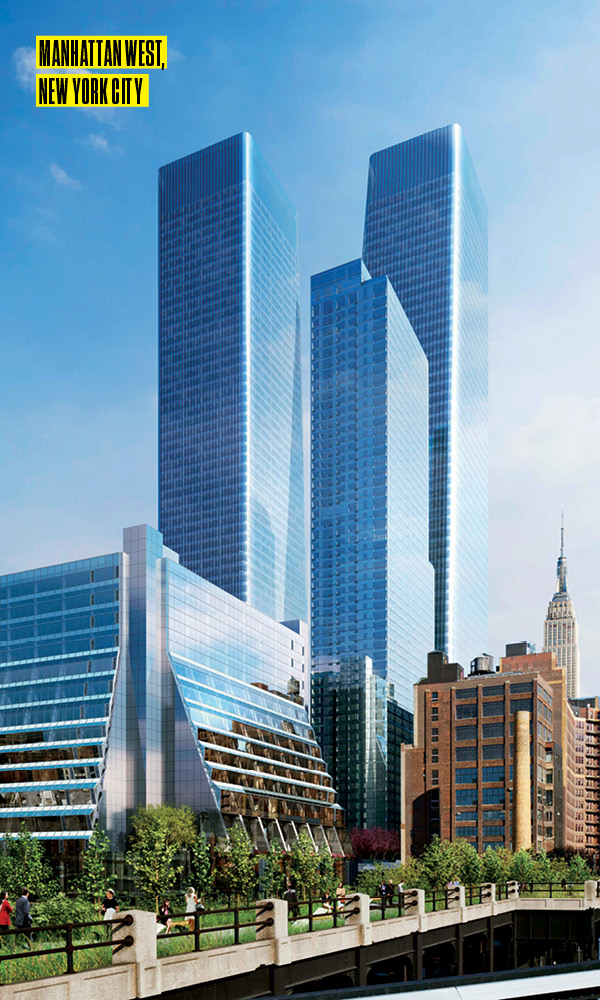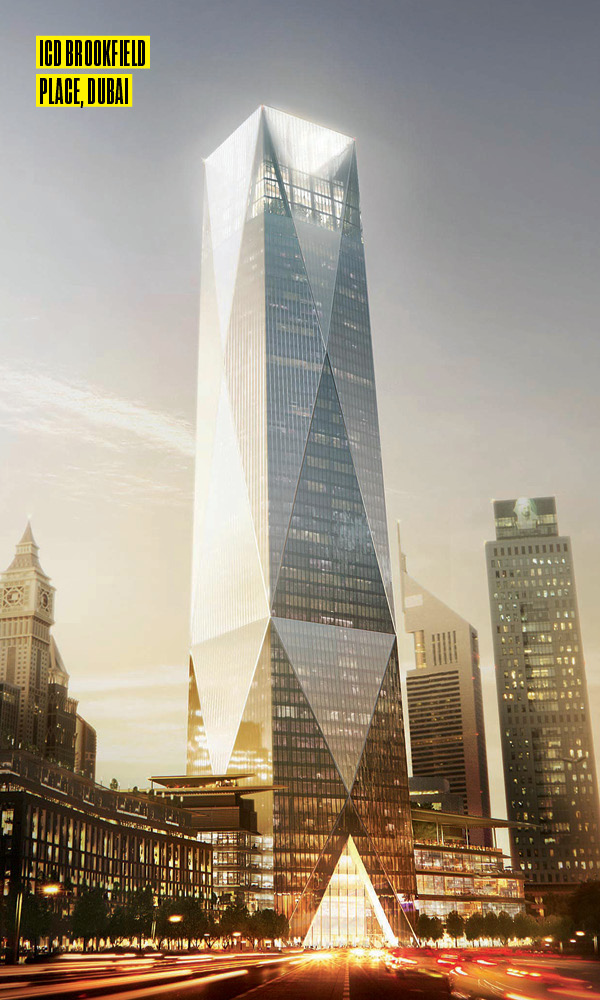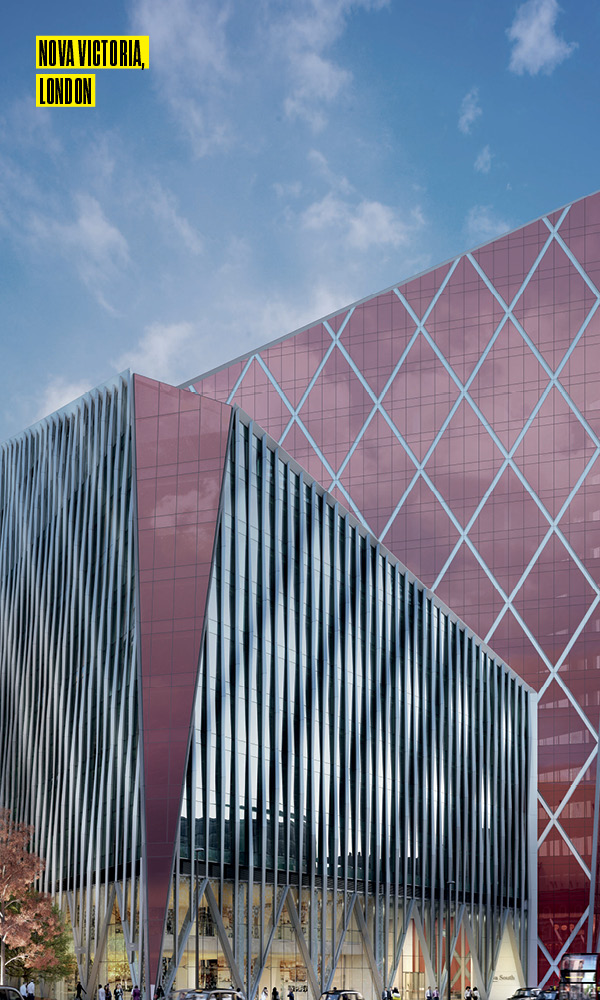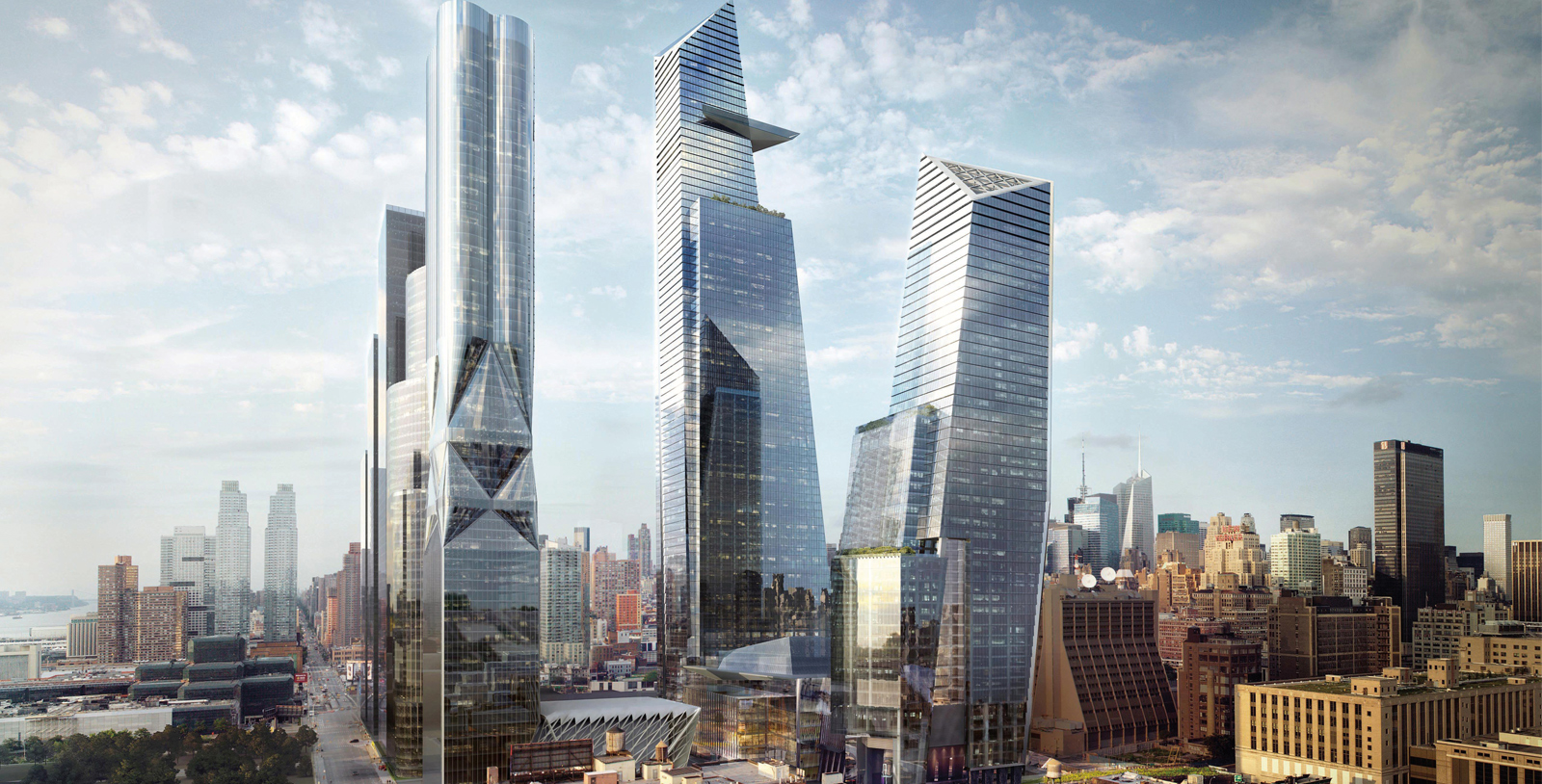Canadian Pensions Are Funding Some of the World’s Coolest New Skyscrapers
Paris hasn’t built a skyscraper since the early 1970s. Politicians put a stop to it. They had to. Somehow, the city of Gustave Eiffel forgot how to make tall structures beautiful.
An architectural winning streak of seven centuries ended in 1973 with the completion of Montparnasse Tower, the 210-metre monolith designed by Eugène Beaudouin, Urbain Cassan, and Louis Hoym de Marien. The brown steel-and-glass building glowered over the otherwise grey-and-white 15th arrondissement like the Eye of Sauron. It was so loathed that local authorities instituted a moratorium on structures taller than seven stories within the city core.
The result is that now, Paris has a sprawl problem. So in 2011, municipal leaders decided to resume building up. But they were clever about it. They knew they were selling something of value: the right to alter the skyline of one the world’s greatest cities for the first time in four decades. Big developers lined up for the opportunity. And in one of the more underreported Canadian business stories of the past decade, an outfit from Montreal walked away with the prize.
Ivanhoé Cambridge, the real-estate arm of Quebec’s powerful pension-fund manager, Caisse de depot et placements du Quebec, teamed with award-winning architect Jean Nouvel to secure the right to build DUO, twin asymmetric towers on an underused parcel of land next to a snarl of railway tracks on the Left Bank in the 13th arrondissement. “This was a super-rare opportunity to design a project of this scale in the city of Paris,” says Bill Tresham, president of Ivanhoé Cambridge. “It’s thrilling we were selected.”

The Canadian economic story has been short on thrills lately. The recession of 2008 wiped out thousands of exporters, and it’s taking longer than expected to replace them and the wealth they generated. The price of oil collapsed. The housing boom was fun for a while, but the bigger news lately is record levels of household debt. The world stopped using Blackberries. But as the Ivanhoé win in Paris shows, it’s not entirely a lost decade for Canadian business. Canada has emerged from the wreckage of the financial crisis as a powerhouse in international real estate. Three Canadian firms rank among the 25 biggest spenders on commercial real estate between March 2015 and March 2017, according to data compiled by Real Capital Analytics. The only other countries with multiple companies on the list are the US and China.
The Caisse sits just outside the Top 25, but few would be surprised if it eventually makes the cut. The fund is good at what it does. At the end of March, Tresham announced that France’s second-largest banking group had pledged to take 100 per cent of the office space in DUO, giving Ivanhoé the anchor tenant it needed. (Construction will begin this year and is scheduled for completion in early 2021.) Other CanCon highlights on the international architectural hit list include the massive Hudson Yards development in New York; Nova Victoria, the multi-use development on the island opposite Victoria Station in London; and the 1.1-million-square- foot ICD Brookfield Place Dubai.
The global elite may have ditched their Canadian smartphones, but more and more of them will be paying rent to landlords based in Montreal, Toronto, and Vancouver.
***
In theory a smallish country such as Canada shouldn’t have so many rich pension funds — let alone so many pension funds exerting so much influence on the global real estate market. And yet: three of Canada’s funds — Canada Pension Plan Investment Board ($279 billion in assets), the Caisse ($271 billion), and Ontario Teachers’ Pension Plan ($171 billion) — rank among the 20 biggest in the world. Five of them are scattered among the 30 biggest play- ers in real estate, according to Boston Consulting. And, in total, the 10 leading Canadian pension-fund managers oversee more than $1 trillion worth of assets, an amount equivalent to more than half of the country’s annual gross domestic product.
So how did this happen? The answer lies in what Boston Consulting Group calls “the Maple Revolution” in asset management. Under the standard rules of managing the retirement savings of hard-working men and women, the best place for that money is in the safest assets possible: traditionally this means low-yield investments like government bonds. The drawback is that they’re in limited supply, and don’t produce much money.

Here comes the revolution. By the 1990s, actuaries in Canada realized the return on all those bonds wouldn’t keep up with the benefits promised to a growing number of retirees. One response would have been to slash future benefits — an unappealing answer for politicians seeking re-election. So policy makers, led by Paul Martin, the former Liberal finance minister (and, later, prime minister), changed the rules to allow pension funds to begin actively managing their portfolios to earn bigger returns.
“It was inevitable we would have to be more creative,” says Neil Cunningham, a senior executive at PSP Investments, which oversees the pensions of federal employees, including the Canadian Armed Forces and the Royal Canadian Mounted Police. In retrospect, the shift seems obvious, but it wasn’t at the time. Back then, most large-scale deals were being made by private investors who were answerable only to their owners or shareholders. High-risk-high-reward investments, such as digging holes in expensive cities like Paris, were thought to be off-limits for pension funds. But with deadlines to meet and huge targets to hit, Canadian leaders were persuaded to play the market, Warren Buffett-style. Luckily, it worked.
The pension funds started slow. At first, they dabbled in equity markets. Then, assets such as toll roads and other infrastructure with proven rates of return. Then existing property was added to the mix. In time, they started looking overseas; initially in familiar places like the US, Europe, and Australia, and then Asia and Latin America. Now, Canada’s pension funds are increasingly financing the building of infrastructure from scratch and taking ownership stakes in private companies. (Canada Pension has earned hundreds of millions of dollars from some well-timed investments in Alibaba, the Chinese e-commerce behemoth founded by billionaire Jack Ma.)
Those who worried the switch to active investing would imperil the futures of millions of retirees have been proven wrong. Instead, Canada Pension, the Caisse, and their peers have been putting up double-digit returns with regularity. That’s Buffett territory.

Like Buffett, the pension funds make only calculated gambles. They are guided by a singular mission: ensuring there will be enough money to pay the benefits owed to retirees. “Long-term expectations, for us, are defined by what it takes to pay pensions for the next 70 years,” Ron Mock, chief executive of Ontario Teachers’, told Bloomberg Television in February.
But with success — and the winds of macroeconomic change — came more reason to explore new frontiers on the risk spectrum.
In the mid-1990s, the benchmark 10-year Canadian government bond returned about six per cent after inflation. Today, the inflation-adjusted yield is closer to zero. Even when they moved to active management, they didn’t see that coming. That’s why international real estate became so attractive. Ivanhoé Cambridge and some others have been active in property for decades, but they tended to stick to Canada, where they understood the rules.
The financial crisis presented a rare opportunity: it wiped out most of the competition. The United Nations forecasts that the world’s major cities will grow by 380 million people in the next five years. That’s steady demand, exactly what a pension-manager desires. So as the world retreated, Canada’s big institutional investors moved in. Prices of five-star assets had plunged, and indebted owners were desperate to sell. The pension funds, along with some big private investors such as Toronto-based Brookfield Asset Management, and insurance firms such as Manulife, went on a shopping spree.
Pension funds have an advantage when times are grim because they represent what’s known as “patient capital.” They’re concerned with keeping their actuaries happy; they care little about what the fickle and faddish traders on Wall Street have to say. They could afford to wait out the recession, especially if the reward was decades of regular lease payments from ritzy renters. That’s exactly the sort of steady cash flow a pension fund needs. And it didn’t hurt that they had hundreds of millions of dollars at their disposal. As Cunningham puts it: “We can write big checks.”
***
The most impressive real-estate development in the world right now might be Hudson Yards in Manhattan, by Oxford Properties, the property arm of Ontario Municipal Employees Retirement System (OMERS). Thousands of workers are in the process of constructing 1.7 million square metres of commercial and residential space on platforms that straddle 30 active railway tracks. At an estimated $20 billion, it’s said to be the most expensive private real-estate development in US history.
Around the corner, Brookfield is building Manhattan West, another multi-billion dollar project that could feature as many as five buildings, including a 303-metre tower that will be one of the tallest in the world. The company already has Brookfield Place New York, a luxury mall in Lower Manhattan. Ivanhoé Cambridge bought Three Bryant Park, an emerald office tower on Avenue of the Americas in Midtown, for a record (US) $2.2 billion in 2015. Canada Pension owns a building near- by. The New York spree is reflective of a larger rush on US real estate. Between 2007 and 2016, Canadians had completed commercial real-estate deals in the US worth $92 billion, more than any other country, the Globe and Mail reported in December, citing separate data from Real Capital Analytics.
It’s not only New York. PSP took advantage of the financial crisis to push into Australia and New Zealand. Oxford also owns buildings in Boston, Washington, London, and Paris. Canada Pension is in London, Sydney, and Shanghai. Cadillac Fairview, the real-estate arm of Teachers’, favours shopping malls and office buildings at home in Canada. But even it has begun dabbling abroad, picking up properties in Santa Monica, California; Rio de Janeiro; Bogota; and Mexico City.

But it’s getting harder. Immediately following the financial crisis, the willingness of Canadian funds to spend money was all the advantage they needed. That’s no longer true. Wall Street has its swagger back. China has usurped Canada as the biggest international buyer of property in New York, according to that Globe report from December. Big institutional investors from other countries are following the example Canada set two decades ago. And since central banks in the US, Europe and Japan have insisted on keeping interest rates extremely low by historical standards, the competition for yield has become even more intense.
Many of the funds are warning their pensioners this year that it will be difficult to continue putting up double-digit gains. Canada Pension managed just a 3.4 per cent return in its 2016 fiscal year. The heated competition could reduce the appetites of Canada’s institutional investors for expensive property. “We try to be boring,” says Cunningham, who is fond of buying US retirement homes. Canada Pension recently spent almost 2 billion British pounds on a portfolio of student dwellings in the UK’s bigger cities. Unsexy, but stable.
Others still see opportunity in going big. Tresham of Ivanhoé Cambridge agrees the safer play is usually buying existing structures. They won the Paris competition, but it still took six years to clear all the regulatory hurdles, in part because locals protested that Nouvel’s towers would obstruct views of the Panthéon. The delay represents time and money that might have been put to more productive uses elsewhere.
But with property prices at extreme levels around the world, Tresham says building from scratch makes as much sense as renovating older buildings to meet the demands of modern renters.
Tresham can back that swagger with results: Ivanhoé has made some $13 billion over the past five years, more than any other of the Caisse’s investment categories. And while some might argue that Ivanhoé allowed itself to get distracted by the Paris skyline, Tresham points out that the city has big plans for the 13th arrondissement. Paris will be announcing more projects in the months ahead, and Ivanhoé Cambridge is back in the mix. “It’s only beginning,” Tresham says. “We’ve built ourselves a nice relationship with them and I think we will have more opportunities.”










